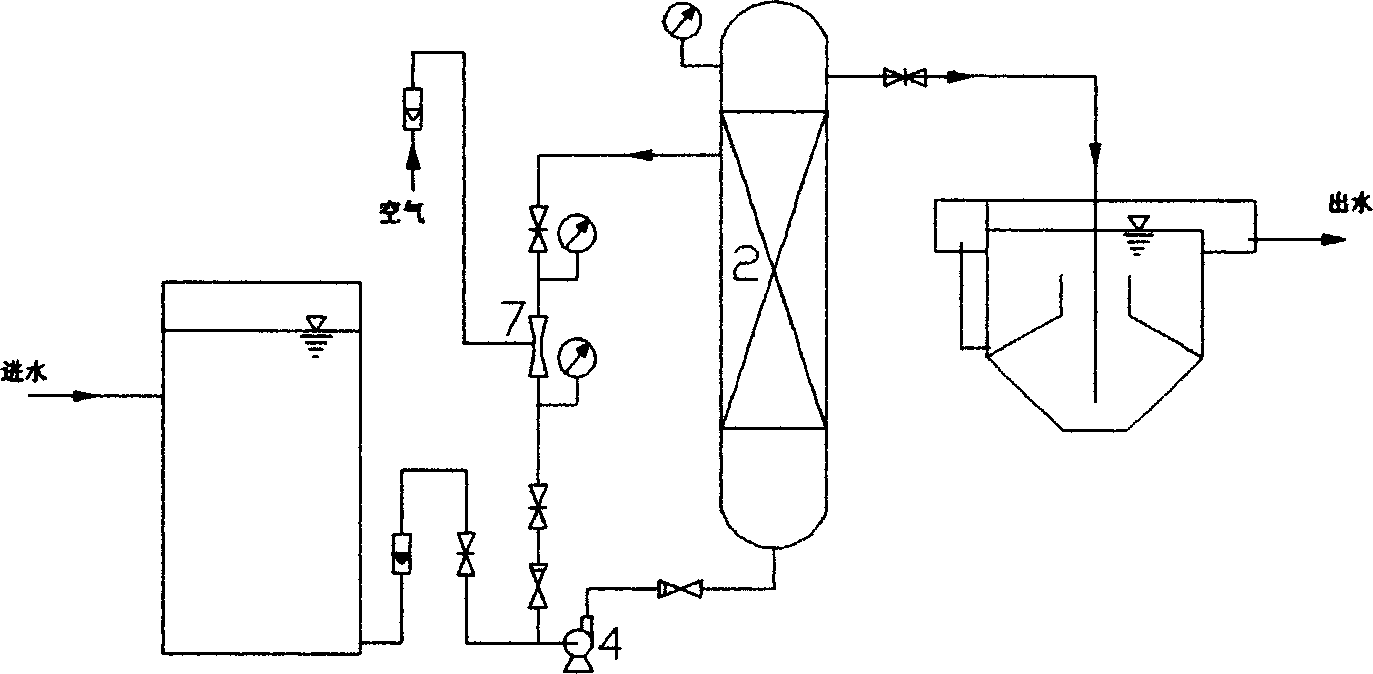Technique for processing dyeing wastewater through organic matter degradation and denitrogenation
A technology for printing and dyeing wastewater and treatment process, which is applied in the fields of energy wastewater treatment, sustainable biological treatment, biological water/sewage treatment, etc. , to increase the equilibrium dissolved oxygen concentration, improve the degradation rate of organic matter, and achieve the effect of automatic compensation of alkalinity
- Summary
- Abstract
- Description
- Claims
- Application Information
AI Technical Summary
Problems solved by technology
Method used
Image
Examples
Embodiment Construction
[0013] A treatment process for the degradation and denitrification of organic matter in printing and dyeing wastewater. The wastewater is adjusted to pH = 6-10, chemical oxygen demand = 800-1200 mg / L, and is boosted by booster pump 4 to enter the pressure type biological contact oxidation tower. 2. At the same time, air is introduced through the jet aerator 7 to quickly dissolve the air in the water. Under the condition that the pressure inside the tower is maintained at 0.2-0.5MPa, the dissolved oxygen in the tower reaches 5-6mg / L, so that the waste water and the microbial film in the tower Contact for 2.5-3 hours and complete the degradation and denitrification of organic matter in wastewater. The pressure-type biological contact oxidation tower uses the residual gas released in the effluent to directly float and separate muddy water to meet the purification requirements. In this embodiment, the jet aerator The inlet port is connected with the pressure type biological contact...
PUM
 Login to View More
Login to View More Abstract
Description
Claims
Application Information
 Login to View More
Login to View More - R&D
- Intellectual Property
- Life Sciences
- Materials
- Tech Scout
- Unparalleled Data Quality
- Higher Quality Content
- 60% Fewer Hallucinations
Browse by: Latest US Patents, China's latest patents, Technical Efficacy Thesaurus, Application Domain, Technology Topic, Popular Technical Reports.
© 2025 PatSnap. All rights reserved.Legal|Privacy policy|Modern Slavery Act Transparency Statement|Sitemap|About US| Contact US: help@patsnap.com

